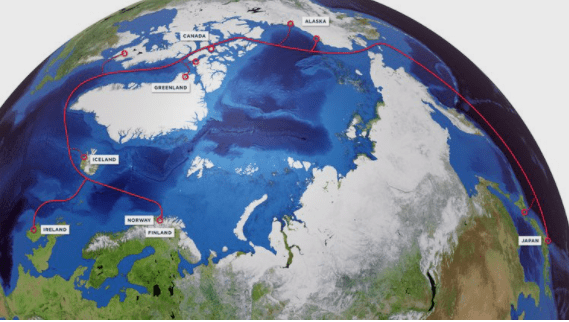On Tuesday, The Barents Observer reported that Far North Digital, an Alaskan company, started to build a new Arctic subsea cable in partnership with Cinia (the Finnish state-owned operator).
The cable has been named the North Fiber Express Route. It will be the first-ever long-haul submarine fiber route through the Arctic Ocean, stretching from Asia to North America, Northern Europe, and Scandinavia, using the Northwest Passage.
The subsea portion of the cable will run from Northern Norway to Japan, with sidings to northern Greenland, Iceland, Ireland, four locations in Arctic Canada and Alaska, before reaching Japan at two locations.
A truly global route
The planned cable is set to have three seamlessly linked portions- the European North Atlantic segment, the North American Arctic segment, and the Asia North Pacific segment. The cable will stretch from northern Norway to Finnish Lapland.
Cinia CEO Ari-Jussi Knaapila said in a press release that there is increasing demand for fast, reliable, and secure international connectivity.
Knaapila predicts that since the cable spans three of the world’s largest internet adopting continents, it will become a truly global venture. The new trans-Arctic route through the Northwest Passage is 14,000 kilometers, compared to the 10,500-kilometer route from before that would have gone through Japan, China, Kirkenes (Norway), and the Kola Peninsula (Russia).
A previous route
Cinia released a statement about the updated route, saying that the Russian Arctic shortcut is still being discussed, with new players in the mix. This spring, the Barents Observer reported that the construction permit for the fiber cable from Murmansk to Vladivostok was granted.
The cable is named Polar Express and comprises 6-pair fiber optic cables on the Russian Arctic seafloor. According to the plans, it has 100 terabits per second capacity and should be up and running by 2026.
